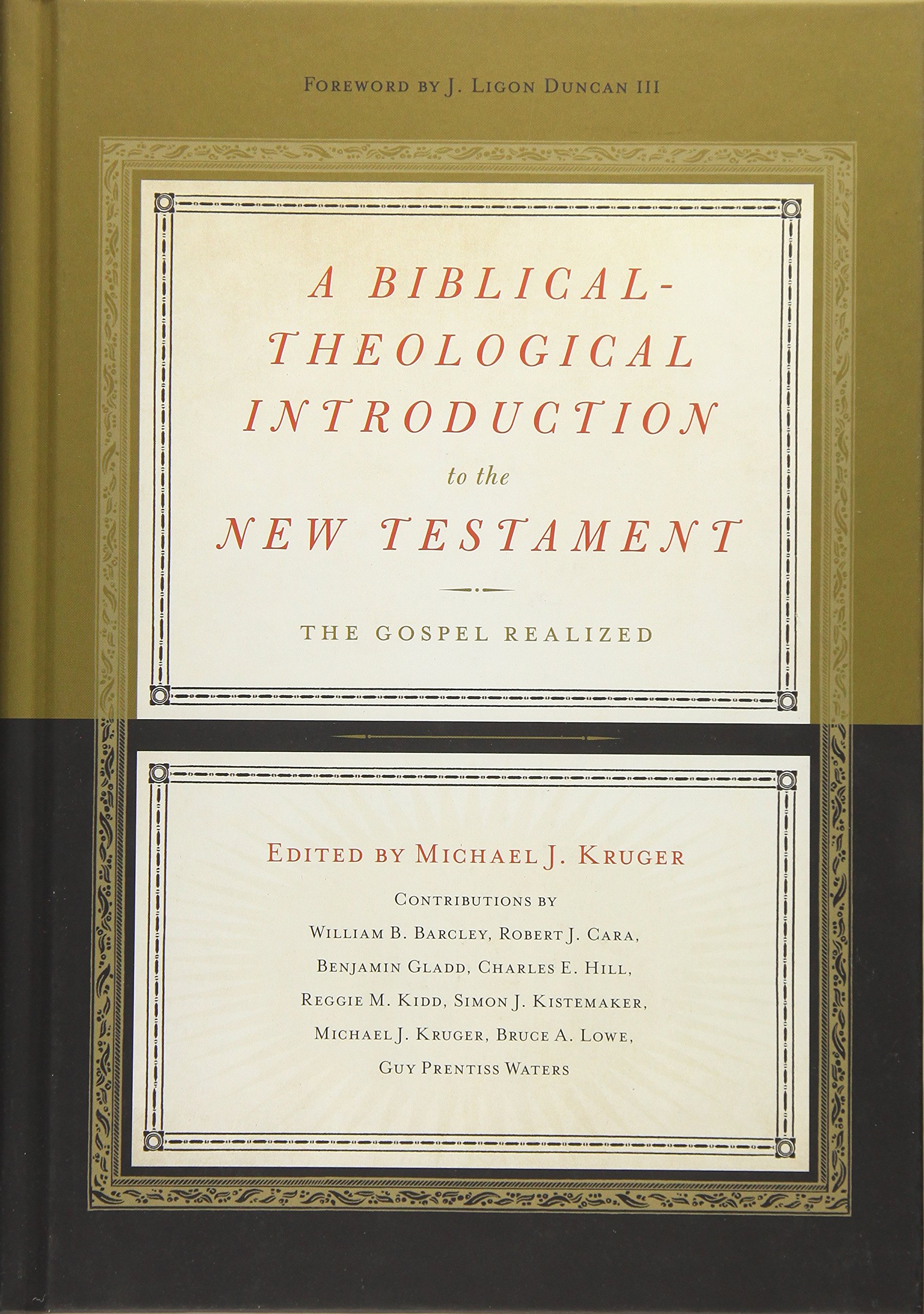A Book Review from Books At a Glance
by Mark Baker
Michael J. Kruger (President of Reformed Theological Seminary, Charlotte) is editor of A Biblical-Theological Introduction to the New Testament: The Gospel Realized. The book is an introduction to the New Testament, meaning that it presents the reader with the major issues of each New Testament book. It is also a biblical-theological introduction, meaning it takes the Bible as its starting point and treats the Bible as a unified whole, focusing on the redemptive-historical arch of the New Testament. It seeks to be accessible to educated laypeople as well as pastoral, providing on-ramps for congregational application. All of the nine contributors have taught at Reformed Theological Seminary, giving the book a thorough Reformed perspective, celebrating the five solas of the Reformation as they are found in the biblical text.
Each contributor was given considerable flexibility in terms of the structure of his respective chapter(s). While the chapters do not follow a standard pattern, they all generally cover the key introductory elements: authorship, date, provenance, outline, etc. The lion’s share of the material comes from the biblical-theological focus. Each chapter highlights key redemptive-historical themes that are present in the book, and these themes also show up in the section-by-section overview. The biblical-theological focus is the most helpful feature of the book. Preachers, teachers, and seminary students alike will benefit from the rich theology presented in each chapter.
Perhaps the best way to analyze this book further is to compare it with a few other New Testament introductions. While the books in this genre are myriad, I will just choose three for comparison: Carson and Moo’s Introduction to the New Testament (Zondervan, 2nd edition: 2005); Köstenberger, Kellum and Quarles’s The Cradle, the Cross, and the Crown (B&H Academic, 2nd edition: 2016); and Campbell and Pennington’s Reading the New Testament as Christian Scripture (Baker: 2020).
Carson and Moo’s book (CM) is the oldest of the group, and it has long been regarded as the standard New Testament introduction. It engages with critical theories and provides copious references to key issues, often citing German and French articles in addition to key English conversation partners. Seminary students interested in pursuing a PhD in New Testament will want to give this work a thorough read, but some of the issues may seem irrelevant to pastors or laypeople.
Köstenberger, Kellum and Quarles’s work (KKQ) maintains the scholarly rigor of CM but is more readable and user-friendly. In addition to treatment of every New Testament book, there are also chapters on New Testament backgrounds, the unity and diversity in the New Testament, and the story line of Scripture.
Campbell and Pennington’s recent work (CP) is the most aesthetically pleasing of the group, with a beautiful selection of supplemental illustrations and graphics. As the title suggests, their work focuses on the New Testament as Christian Scripture, highlighting both personal application and retrieval from the Great Tradition. Though there are sidebars with deeper background or theological issues, some readers might find themselves still looking for more information that could be found in CM or KKQ.
How does Kruger’s volume compare to these other three? As a New Testament introduction, it has less background information than CM or KKQ, although the material is sufficient for pastors and laypeople. What it might lack in instruction for the academy, it gains in pastoral application and readability. Kruger’s work is would be an excellent supplement for pastors, small group leaders, and Sunday school teachers as they prepare sermons and lessons. The main drawback from the book is common with any edited volume like this: some chapters are better than others. When you have nine contributors all from one seminary, some chapters are naturally going to fall short of the scholarly excellence demonstrated in both CM and KKQ. On the other hand, some chapters are truly excellent, and are alone worth the price of the book: Benjamin Gladd on Mark, Michael Kruger on John, and Bruce Lowe on James all come to mind.
As a college professor, I have chosen KKQ for my NT 1 and 2 classes. It is readable and informative, and there are plenty of biblical-theological themes present in that work, even though the redemptive-historical aspect is not the book’s primary focus. Nevertheless, Kruger’s volume could stand as a helpful supplemental text to New Testament classes. The work seems to be most at home as a resource for the church. As such, pastors and church leaders will want a copy in their own library and should consult it often.
Mark Baker (PhD, Southeastern Baptist Theological Seminary) serves as professor and assistant director at the Scarborough College Darrington campus in Houston, TX.
